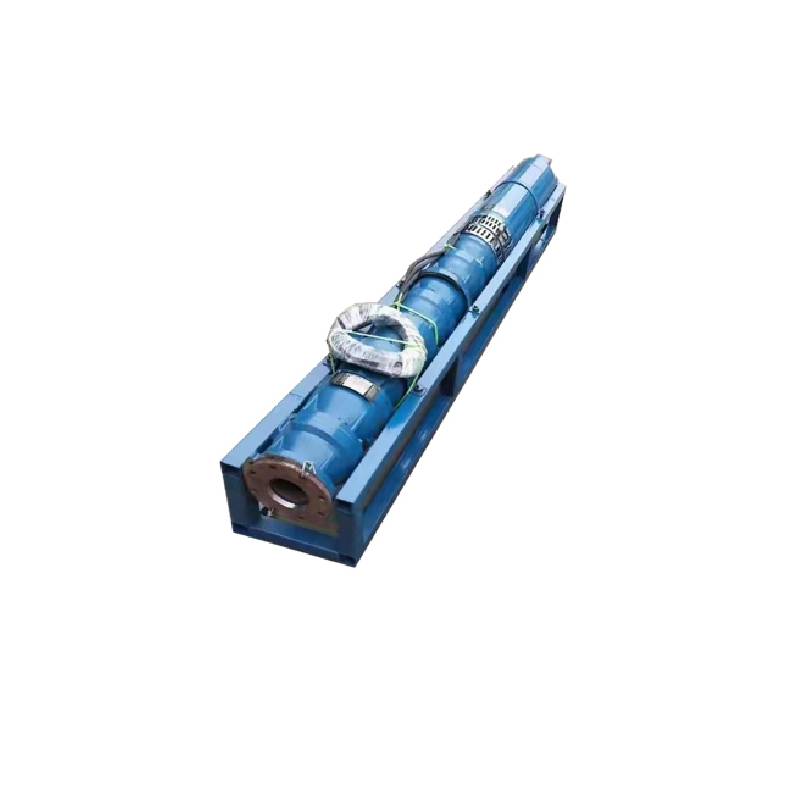Oct . 13, 2024 08:34 Back to list
Submersible Centrifugal Pump Applications and Benefits for Efficient Fluid Management Systems
Submersible Centrifugal Pumps An Overview
Submersible centrifugal pumps are essential devices in various applications, especially in water management, agriculture, and wastewater treatment. These pumps are designed to operate while submerged in the fluid they are intended to pump, making them especially effective for lifting water from deep wells, reservoirs, and other underground sources.
Working Principle
The working principle of a submersible centrifugal pump is relatively straightforward. It utilizes a rotating impeller to generate flow and pressure. The pump consists of a motor and a pump body, and the entire assembly is submerged into the fluid. As the impeller rotates, it imparts kinetic energy to the fluid, converting that energy into pressure. This pressure allows the fluid to be pushed through the discharge pipe, enabling efficient transportation to various locations.
Design Features
One of the most significant design features of submersible centrifugal pumps is their ability to operate underwater. This feature eliminates the need for a priming system, which is essential for traditional pumps that operate above the fluid surface. The submersible design allows for easy installation in boreholes or tanks, making these pumps versatile for multiple applications.
Moreover, these pumps are typically sealed tightly to prevent water intrusion into the motor, ensuring safety and longevity. Many submersible pumps are equipped with a built-in cooling system that utilizes the surrounding fluid to keep the motor cool during operation. This is particularly important, as overheating can lead to motor failure and increased maintenance costs.
Applications
submersible centrifugal pump

Submersible centrifugal pumps find applications in various fields. In municipal and agricultural areas, they are commonly used for irrigation, providing a reliable method to lift water from deep wells or underground aquifers. The pumps are efficient in maintaining consistent water supply, essential for crop growth and livestock.
In the realm of sewage and wastewater management, submersible pumps are invaluable. They are designed to handle fluids containing solids and are often used in treatment plants, lift stations, and for drainage purposes in flooded areas. These pumps play a critical role in keeping urban environments safe and sanitary.
Construction sites also benefit from submersible pumps, where they are used for dewatering purposes. Removing excess water from excavations or foundations is crucial to ensure that structures are built on stable ground, and submersible pumps provide an effective and reliable solution.
Advantages
Submersible centrifugal pumps offer several advantages over conventional pumps. Their ability to function underwater reduces the risk of cavitation, a common issue among above-ground pumps. Cavitation can lead to pump inefficiency and potential damage over time. Additionally, submersible pumps are often quieter in operation, making them preferable for residential areas.
The compact design of submersible pumps allows for easy transport and installation. They can be deployed quickly in emergency situations, such as flooding, providing immediate relief. Energy efficiency is another advantage; many models are designed to operate at lower power requirements, reducing overall operational costs.
Conclusion
In summary, submersible centrifugal pumps play a crucial role in various industries by providing efficient water management solutions. Their unique design and operational advantages make them ideal for tasks ranging from agricultural irrigation to sewage treatment and construction dewatering. As technology continues to evolve, these pumps are likely to become even more efficient, further solidifying their importance in modern fluid management systems. Whether dealing with clean water or wastewater, submersible centrifugal pumps remain a reliable choice for effective fluid transport.
-
Submersible Water Pump: The Efficient 'Power Pioneer' of the Underwater World
NewsJul.01,2025
-
Submersible Pond Pump: The Hidden Guardian of Water Landscape Ecology
NewsJul.01,2025
-
Stainless Well Pump: A Reliable and Durable Pumping Main Force
NewsJul.01,2025
-
Stainless Steel Submersible Pump: An Efficient and Versatile Tool for Underwater Operations
NewsJul.01,2025
-
Deep Well Submersible Pump: An Efficient 'Sucker' of Groundwater Sources
NewsJul.01,2025
-
Deep Water Well Pump: An Efficient 'Sucker' of Groundwater Sources
NewsJul.01,2025
-
 Submersible Water Pump: The Efficient 'Power Pioneer' of the Underwater WorldIn the field of hydraulic equipment, the Submersible Water Pump has become the core equipment for underwater operations and water resource transportation due to its unique design and excellent performance.Detail
Submersible Water Pump: The Efficient 'Power Pioneer' of the Underwater WorldIn the field of hydraulic equipment, the Submersible Water Pump has become the core equipment for underwater operations and water resource transportation due to its unique design and excellent performance.Detail -
 Submersible Pond Pump: The Hidden Guardian of Water Landscape EcologyIn courtyard landscapes, ecological ponds, and even small-scale water conservancy projects, there is a silent yet indispensable equipment - the Submersible Pond Pump.Detail
Submersible Pond Pump: The Hidden Guardian of Water Landscape EcologyIn courtyard landscapes, ecological ponds, and even small-scale water conservancy projects, there is a silent yet indispensable equipment - the Submersible Pond Pump.Detail -
 Stainless Well Pump: A Reliable and Durable Pumping Main ForceIn the field of water resource transportation, Stainless Well Pump has become the core equipment for various pumping scenarios with its excellent performance and reliable quality.Detail
Stainless Well Pump: A Reliable and Durable Pumping Main ForceIn the field of water resource transportation, Stainless Well Pump has become the core equipment for various pumping scenarios with its excellent performance and reliable quality.Detail
